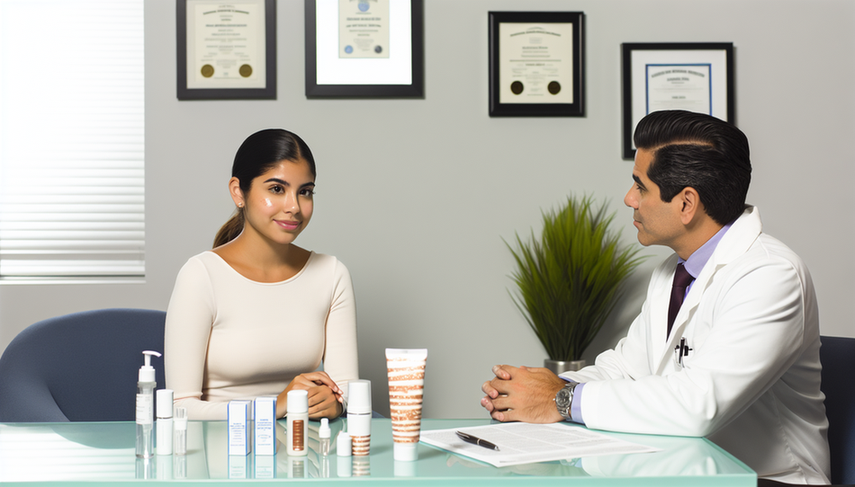Effective Acne Treatment: Isotretinoin, Topical Antibiotics, and Essential Facial Hygiene for Scar Management

Dear colleagues, acne treatment continues to be a common challenge in our daily clinical practice. Despite being a prevalent condition, especially among adolescents, acne can significantly impact our patients' quality of life. In this article, we will explore the most effective therapeutic options, focusing on the use of isotretinoin, topical antibiotics, and the importance of facial hygiene and scar management.
Diving Deeper into Acne Treatment
Acne vulgaris is a chronic inflammatory disease primarily affecting the pilosebaceous unit. Topical retinoids, such as adapalene and tretinoin, are considered the cornerstone of treatment for comedonal and mild to moderate acne. These agents work by normalizing keratinization and reducing the formation of comedones. A recent study highlights the efficacy of fixed combinations of retinoids with benzoyl peroxide, which have proven superior to individual treatments in reducing both inflammatory and non-inflammatory lesions [1].
Regarding topical antibiotics, their use must be cautious due to the risk of bacterial resistance. The combination of clindamycin with benzoyl peroxide is an effective option for inflammatory acne, but it is recommended to limit its use to the short term and always in combination with other topical agents [2]. For cases of moderate to severe acne, oral isotretinoin remains the most effective treatment, addressing all etiological factors of acne. However, its use requires careful monitoring due to potential adverse effects [3].
In addition to pharmacological treatments, dermatological care is essential for the comprehensive management of acne. Proper facial hygiene, the use of non-comedogenic products, and sun protection are basic measures that should be emphasized to our patients. It is also important to address scar management post-acne, utilizing techniques such as chemical peels and laser therapy, which have shown effectiveness in improving skin texture [4].
Conclusions
Acne treatment requires a multifaceted approach that combines topical and systemic agents with appropriate dermatological care. Personalizing treatment according to the severity of acne and the individual characteristics of the patient is crucial for optimizing outcomes. As physicians, we must stay updated on the latest guidelines and evidence to provide the best possible care for our patients. Continuous education and effective communication with our patients are fundamental to improving treatment adherence and, ultimately, their quality of life.
References
- [1] Efficacy and Safety of a Fixed-Dose Clindamycin Phosphate 1.2%, Benzoyl Peroxide 3.1%, and Adapalene 0.15% Gel for Moderate-to-Severe Acne: A Randomized Phase II Study of the First Triple-Combination Drug
- [2] New Developments in Topical Acne Therapy
- [3] Guidelines of care for the management of acne vulgaris
- [4] Practical management of acne for clinicians: An international consensus from the Global Alliance to Improve Outcomes in Acne
Created 5/1/2025
